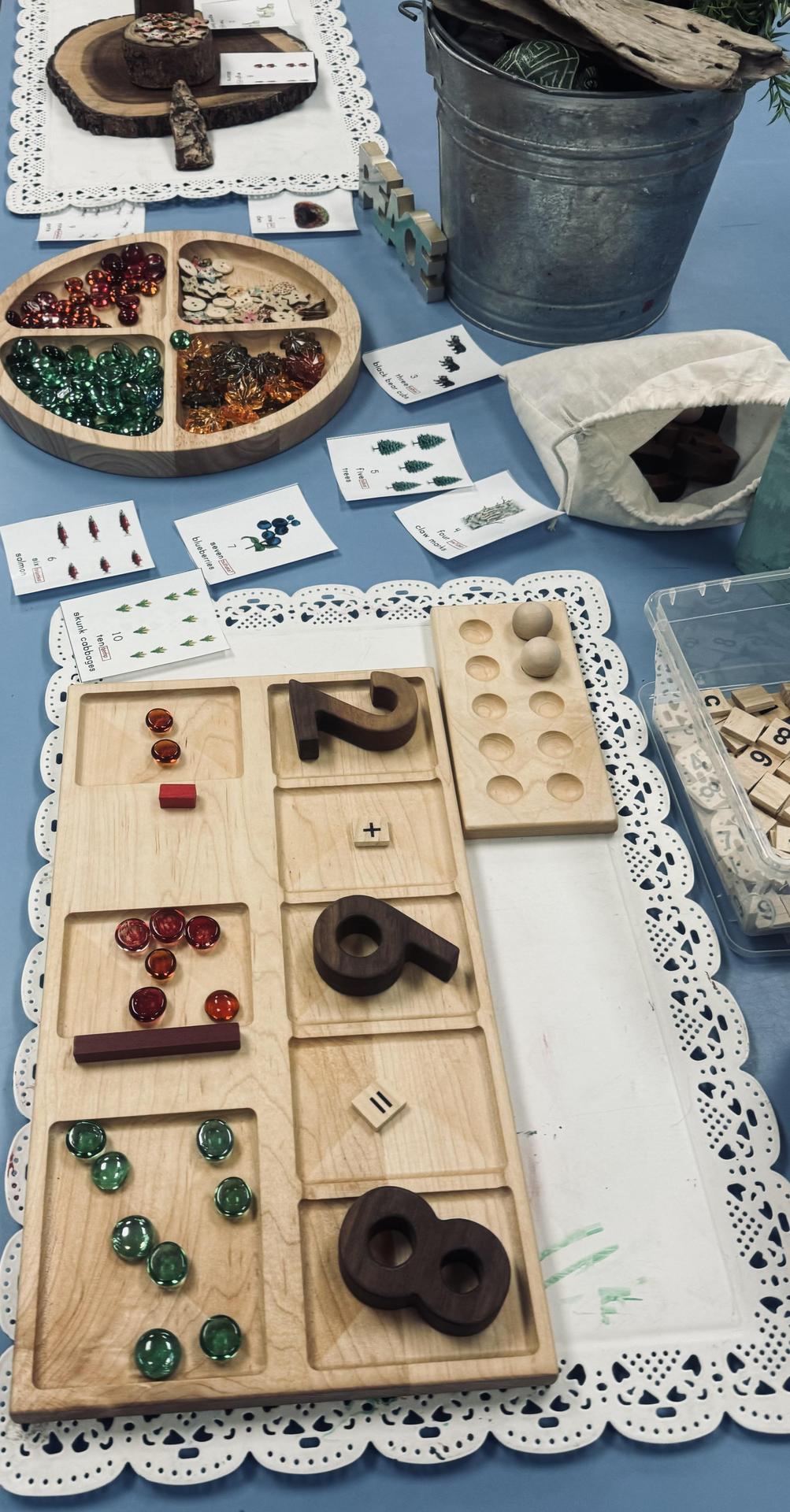Numeracy


Defining Numeracy
 Numeracy is the ability to understand and work with numbers. Numerically competent students see themselves as mathematicians and demonstrate:
Numeracy is the ability to understand and work with numbers. Numerically competent students see themselves as mathematicians and demonstrate:
- Conceptual understanding
- Procedural fluency
- Strategic competence
- Adaptive reasoning
- Productive dispositions
Educators support children in developing positive habits of mind:
- Persevering and using mathematics to solve problems in everyday life
- Recognizing that there are multiple ways to solve a problem
- Demonstrating respect for diversity in approaches to solving problems
- Choosing and using appropriate strategies and tools
- Pursuing accuracy in problem solving
The B.C. Mathematics curriculum is designed to engage children in:
- Using math skills.
- Developing a deeper understanding of the world around them.
- Using numerate thinking and communication skills to solve problems.
- The capacity to engage fully as numerate and responsible citizens in a digital age.
"Numeracy is the ability to understand and apply mathematical concepts, processes,
and skills to solve problems in various contexts."
- B.C. Ministry of Education and Child Care

Balanced Numeracy
Numeracy learning is both a foundation and a process. We have learned that a balanced approach to numeracy is the best way to support learners in an ever-changing world.
Balanced numeracy places equal value on:
- Learning as a foundation involving the teaching of foundational numeracy skills
- Learning as a process involving the experiences of inquiry, exploration, and play
Effective numeracy instruction integrates research-based practices with adaptive teacher expertise. This might involve making use of aspects of a prescribed program while finding ways to personalize, adjust, and extend in response to individual, group, and whole class dynamics.

Learning as a Foundation
Early years numeracy development focuses on number sense to enable children to:
- Connect
- Interpret
- Analyze
- Apply
- Transfer
- Solve
- Communicate
Foundational number sense skills support students as they develop as numeracy learners.
Number sequence |
Number sequence is a list of numbers linked by a rule. Determining the next numbers in the sequence required figuring out the rule. |
One-to-one correspondence |
One-to-one correspondence is the ability to count groups of objects one at a time, only counting each object once. |
Cardinality |
Cardinality is understanding that the last number counted represents how many there are in total. |
Conservation |
Conservation is the understanding that the quantity stays the same even when rearranged. |
Symbolic magnitude understanding |
Symbolic magnitude understanding is the ordering and comparing of written numerals and number words. |
Subitizing |
Subitizing is the ability to look at a small set of objects and automatically know how many there are in total. |
Estimating |
Estimating is an educated guess about a quantity based on existing knowledge. |
Place Value |
Place value is the value of each digit in a number based on it's position. |
Connecting numeral to quantity |
Connecting numeral to quantity is the understanding that numbers represent specific amounts. |
Skip counting |
Skip counting is a way of counting forward or backward by a number other than 1. The same amount is skipped each time. |
Decomposition and composition |
Decomposition is the ability to break numbers down into parts. Composition is the ability to put them back together again. |
Flexible counting strategies |
Flexible counting strategies involve students using different methods to count objects and solve problems in a variety of ways. |
Student-centered mathematics foundations by John Van de Walle support us in understanding four key ideas of effective mathematics teaching:
- Hands-on learning
- Problem-solving
- Exploring big ideas
- Formative assessment
"Decisions in life are so often based on numerical information;
to make the best choices, we need to be numerate."
- Andreas Schleicher

Learning as a Process
Inquiry, exploration, and play are essential social and experiential learning opportunities that enable students to take risks and try new things as they develop their numeracy skills.
Inquiry |
Ideas are explored through questions, provocations, investigations, and representations. Inquiry involves solving problems, seeking opportunities, accessing resources, or trying something new. Inquiries have no preset outcomes but emerge organically as children and adults think alongside one another. |
Exploration |
An intentionally set-up environment and materials provoke interest and curiosity and invite children to engage in hands-on learning, often alongside peers. Rich exploration design affords children opportunities to observe, analyze, experiment, innovate, create, and discover. |
Free Play and Play-Based Learning |
Free play is a self-chosen and self or peer-directed activity that is focused on the process and not the product. Play-based learning includes child-directed, teacher-guided, and teacher-directed play. Play engages children in active, imaginative opportunities and experiences. |
Research by Stuart Brown (2009) and Peter Gray (2013) support us in understanding the importance of the connection between play and:
- Numeracy learning
- Human brain development
- Social and emotional development
- Overall wellbeing

"Numeracy understandings grow naturally from students' explorations."
- Carole Fullerton


The Early Numeracy Project was designed in response to the Truth and Reconciliation Calls to Action and was initially focused on supporting the numeracy development of Indigenous children in our district. A key component of this project is the decolonization of math instruction and learning.
This project is informed by the First Peoples Principles of Learning:
- Learning is holistic, reflexive, reflective, experiential and relational (focused on connectedness, on reciprocal relationships, and a sense of place)
- Learning is embedded in memory, history, and story
- Learning involves patience and time
- Learning requires exploration of one's identity

Assessment
Key Practices |
|
Tools and Resources |
|

"Numeracy is not just about numbers; it's about making sense of the world through a mathematical lens."
- Janice Novakowski